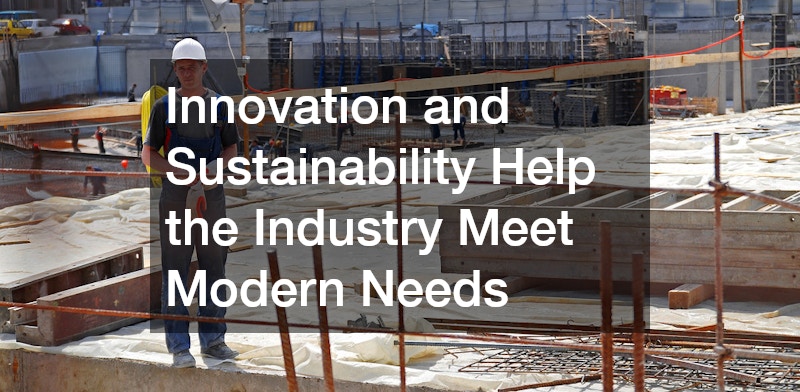This article explores the emerging trends in the concrete industry projected for 2025. As the demand for sustainable and innovative building materials rises, concrete companies must adapt to stay ahead. Here, we identify the key trends and address the most common inquiries about their impact.
How are companies incorporating sustainability into concrete production?
The Rise of Eco-Friendly Materials
Environmental awareness is escalating, and concrete companies are responding by adopting greener alternatives like carbon-reducing additives and recycled aggregates. These materials not only help in reducing the ecological footprint but also improve the strength and performance of concrete.
Companies are increasingly using supplementary cementitious materials such as fly ash and slag, which enhance sustainability. In addition, the integration of recycled aggregates into new concrete formulations is reducing the need for natural resources.
Innovations in concrete composition are essential for achieving lower greenhouse gas emissions. By shifting towards these eco-friendly materials, companies are making significant strides in promoting sustainability in the construction industry.
Innovative Energy-Efficient Practices
To achieve sustainability goals, companies are implementing energy-efficient practices, including the optimization of production processes to reduce energy consumption. Automated systems and intelligent manufacturing processes are increasingly being used to minimize energy input.
Incorporating renewable energy sources in concrete production plants is becoming more common, lowering the carbon footprint of these facilities. Some companies have also invested in energy recovery systems to further boost efficiency.
These strategies not only assist in meeting stringent environmental regulations but also reduce operational costs. By focusing on energy efficiency, concrete companies are demonstrating their commitment to creating sustainable infrastructure solutions.
What technological advancements are reshaping the concrete industry?
3D Printing in Construction
3D printing technology is revolutionizing the industry by enabling the creation of complex structures quickly and with reduced material waste, thereby enhancing efficiency. This technology allows for the precise layering of concrete, offering innovative design possibilities.
The advent of large-scale 3D printers capable of printing entire buildings presents a significant advancement in construction methodologies. As the precision of 3D printing improves, it reduces the margin of error and enhances construction speed.
Furthermore, the use of 3D printing eliminates the need for costly formwork and reduces the number of labor hours required. Adopting this technology positions companies to meet future demands and explore creative construction techniques.
Use of Advanced Robotics
Robotics is increasingly being integrated into manufacturing and construction processes, allowing for precise work, safety improvements, and reductions in both time and labor costs. Automated machines are now capable of executing repetitive and hazardous tasks with high efficiency.
Integrating robotics in construction enhances project quality by ensuring consistent application of building materials. As robotics evolve, we can expect even more complex tasks such as quality control and real-time performance monitoring to be handled with minimal human intervention.
This trend is not only elevating the construction process but also attracting a new workforce skilled in robotics programming and maintenance. Thus, the use of robotics in concrete construction is playing a key role in industry advancement.
How are companies addressing durability and performance in concrete?
Development of High-Performance Concrete
High-performance concrete formulations are being developed to enhance durability, strength, and longevity, meeting the demands of modern infrastructure projects. This type of concrete offers benefits such as reduced permeability and increased load-bearing capacity.
Incorporating advanced admixtures and polymers has led to concrete that withstands harsh environmental conditions without significant degradation. These formulations provide a more sustainable and cost-effective solution to traditional concrete.
The focus on high-performance concrete is integral in expanding the possibilities of contemporary architecture and engineering. As a result, construction projects are seeing extended lifespans and reduced maintenance costs.
Innovations in Curing Technology
Advancements in curing technology, including the use of controlled environment curing and curing compounds, are enhancing performance and maximizing the lifespan of concrete structures. By ensuring optimal curing conditions, the quality of the finished product can be significantly improved.
Some companies are utilizing real-time monitoring systems to adjust curing processes based on environmental factors, ensuring consistency across projects. Innovations like these lead to stronger, more reliable concrete structures.
These curing innovations are pivotal in reducing issues such as cracking and surface imperfections. With continued research and technological investment, curing processes will advance, driving the concrete industry toward a new era of durability.
As we approach 2025, the concrete industry is poised for transformation driven by sustainability, technological advancements, and enhanced durability. Companies embracing these trends are not just preparing for future demands but are also contributing to a more sustainable future.
The integration of innovative technologies and sustainable practices ensures that the industry can meet the evolving needs of the modern world. By adapting to these shifts, companies are paving the way for a greener, more efficient construction landscape.
The focus on durability and performance enhances the overall lifecycle of concrete structures, providing economic and environmental benefits. As a result, the construction industry is set to witness significant advancements in the years to come.

